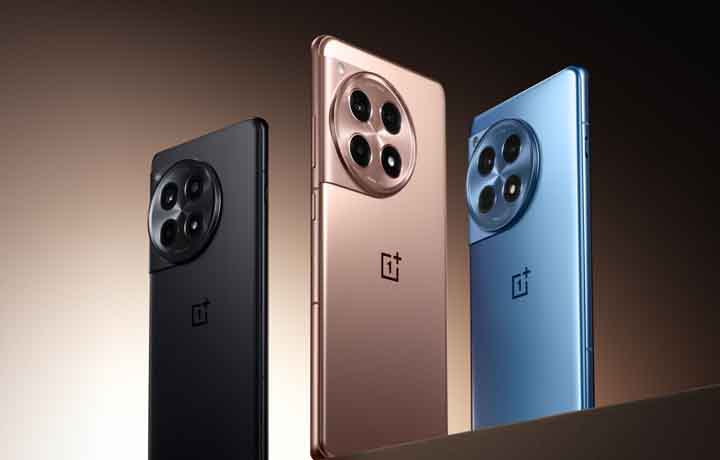OnePlus Ace 3 Review: A Solid Contender with Some Missed Shots
Mid-range smartphone market has been a fast-evolving landscape, and the OnePlus was and still one of the bigest players in the field. The Chinese giaent continues to assert its presence with the OnePlus Ace 3, armed with the Snapdragon 8 Gen 2 processor.
In a market flooded with devices sporting the same chipset, OnePlus aims to stand out with its unique features and design choices. As we delve into this comprehensive review, we’ll explore the design, display, performance, camera capabilities, battery life, and more, to understand where the OnePlus Ace 3 fits in the competitive mid-range segment.
- Read also:
- Redmi K70 Pro First Impression: A Comprehensive Review
- How to Set Up Samsung Galaxy Watch 6 with an Android Phone
Design:
The design of the OnePlus Ace 3 raises some eyebrows, as the reviewer expresses disappointment in seeing the same camera module used across five different models. The frustration is understandable, as even premium flagship devices like the iPhone differentiate between standard and pro versions. The redundant design choice is emphasized further by an interesting observation – what appears to be a flash is, in fact, an ambient light sensor, with the flash located in the upper left corner.
Despite these criticisms, there are some positive notes, like the incremental improvements over its predecessor, the Ace 2 Pro. However, the absence of a metal frame and the return of the IR emitter may leave some users wanting more. The shift from a super-large vibration motor to a normal linear motor is another noticeable change, impacting the tactile feel.
While the design is somewhat stagnant, the placement of the fingerprint recognition is commended for its practicality. Nevertheless, the absence of wireless charging, an IP68 rating, and the use of USB 2.0 may be viewed as compromises, especially in a market where competitors are pushing boundaries.
Display:
Moving on to the display, the OnePlus Ace 3 boasts a panel shared with the Realme GT5 Pro, sourced from Boe. The display’s standout features include a peak brightness of 4,500 nits, LTPS technology, Corning Gorilla Victus 2, and various eye-protection features. I personally appreciate the impressive full-screen brightness under bright light conditions, reaching 1,600 nits, along with a manual maximum brightness of 800 nits. Despite a slightly lower refresh rate compared to the GT5 Pro, the display holds its ground.
- Fitbit Inspire 3 vs. Fitbit Luxe vs. Fitbit Charge 5
- Samsung Galaxy Watch 6 Vs. Coros Pace 3: Which Is The Best For You
Benchmark & Gaming:
Equipped with the Snapdragon 8 Gen 2 processor, the OnePlus Ace 3 enters the battlefield with strong performance credentials. There is some growing trend of using last year’s flagship processors in mid-range phones, making premium features more accessible to a wider audience. Gaming proves to be a standout area for the Ace 3, with the device successfully conquering demanding titles like Genshin Impact. The absence of thermal throttling and low power consumption, thanks to a normal VC thermal solution, sets it apart from its competitors.
An exciting revelation in gaming is the support for super-resolution and frame interpolation across all games, providing a sharper and smoother gaming experience. Despite a slight increase in latency and automatic shutdown in high-temperature situations, these features contribute to the Ace 3’s dominance in its price range.
Camera:
The camera system on the OnePlus Ace 3 showcases a mix of strengths and weaknesses. The main camera, featuring the Camera IMX A90 sensor commonly found in OnePlus family phones, delivers reliable performance. I appreciate its ability to capture good photos at both 23mm and 56mm focal lengths. However, there are concerns about the color style, with higher saturation and exposure requiring manual adjustments for desired results.
While the main camera earns praise, the macro camera disappoints. Described as “worse than expected,” my criticizes go to not only the poor image quality but also serious color aberrations. The ultra-wide camera, an 8-megapixel sensor, doesn’t escape criticism either, with a lack of clarity in various lighting conditions and limited video recording capabilities. Notably, OnePlus has seemingly acknowledged the shortcomings of these cameras by excluding them from Pro mode, signaling a conscious decision to focus on the main camera’s performance.
Battery & Charging:
OnePlus has made a wise choice in combining a 100W charging system with a substantial 5,500mAh battery. This pairing results in a device that excels in both fast charging capabilities and prolonged battery life. I should praise the OnePlus for taking battery life seriously, positioning the Ace 3 as a frontrunner in its price range. With competition like the Red Magic 9 Pro and Nubia Z60 Pro, the Ace 3’s battery performance stands out.
- Read also:
- Redmi Watch 4 Review: Affordable Elegance with Top-notch Features
- Lenovo ThinkPad X1 Carbon Review: A Reliable Business Workhorse
- Garmin Venue 2 vs. Samsung Galaxy Watch 6
Conclusion:
In conclusion, the OnePlus Ace 3 positions itself as a formidable contender in the mid-range smartphone segment. Its Snapdragon 8 Gen 2 processor, coupled with innovative gaming features, sets it apart in terms of performance. The display, while not groundbreaking, offers a satisfying visual experience with its high brightness levels. However, the design choices, particularly the repetitive camera module and exclusion of premium features like wireless charging and an IP68 rating, may leave some users wanting more.
The camera system is a mixed bag, with the main camera delivering reliable results, but the macro and ultra-wide cameras falling short of expectations. OnePlus’ decision to exclude these cameras from Pro mode suggests a recognition of their limitations. The battery and charging capabilities, on the other hand, stand out as a highlight, making the Ace 3 a leader in its class.
While the OnePlus Ace 3 may not be a revolutionary leap forward, it successfully refines and consolidates its position in the competitive mid-range market. As we keep our desire for OnePlus to push harder, addressing the issues with the macro camera and redesigning the camera module, it remains to be seen how OnePlus will evolve its mid-range offerings in the future. In the crowded field of choices, where Redmi K70, Realme GT5 Pro, and the Honor Neo 9 are competitors, the OnePlus Ace 3 presents a compelling option, albeit with a few missed shots.
- Shop On Amazon Using Our Links To Support Us:
- Amazon under $25 – Amazon best sellers – Amazon most gifted






